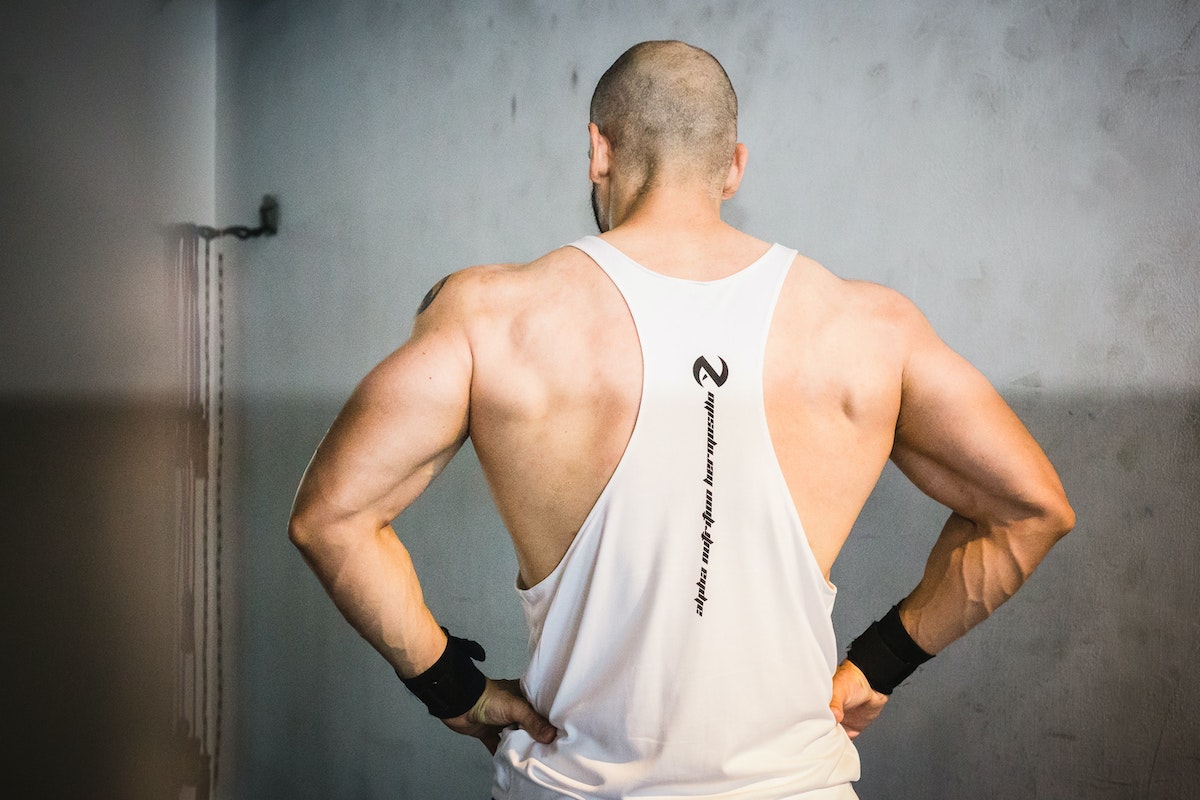When you think about Arnold Schwarzenegger, you probably picture him pumping serious iron. The renowned Austrian-born film actor and bodybuilder is widely known for his sculpted physique, impressive strength, and perhaps his badass parting line from The Terminator, “I’ll be back.” The seven-time Mr. Olympia winner introduced the Arnold Press to the bodybuilding world for a killer shoulder workout. Here’s what you need to know to master the Arnold Press.
What is the Arnold Press?

The Arnold Press is a variation of the original dumbbell shoulder press. Arnold Schwarzenegger popularized this effective movement that combines rotatory motion with a traditional dumbbell shoulder press. You can perform the Arnold Press sitting or standing using dumbbells.
What muscles does the Arnold Press work?

Arnold included the wrist rotation to hit all three deltoid muscles in your shoulders, especially the often-overlooked rear deltoid. The Arnold Press works your:
- Deltoid muscles in your shoulders.
- Triceps in your upper arms.
- Pectoral muscles in your upper chest.
- Trapezius muscles at the top center of your back and neck area.
Some people find they can lift a heavier weight with the seated press variation. However, the standing variation requires more engagement from your core and glutes for stability. This exercise is typically performed bilaterally with two dumbbells, but you can work one arm at a time if you choose.
Is the Arnold Press bad for your shoulders?

If you’re able to perform the Arnold Press, you’ll see big rewards when it comes to shoulder strength and muscle endurance. The Arnold Press isn’t inherently bad for your shoulders, but it does exert a little more pressure on your shoulder joint compared to other shoulder press variations. It’s best to conquer the traditional dumbbell shoulder press and enhance your shoulder strength and mobility before attempting this more advanced variation. If you’re recovering from a shoulder injury, you should avoid shoulder press variations until your doctor or physical therapist approves it.
What are the benefits of the Arnold Press?

The wrist rotation of the Arnold Press ensures you hit all three deltoids in your shoulders and increases the time under tension. It’s clear to see how this variation delivers big shoulder gains. Here are some of the benefits of the Arnold Press:
- Better posture.
- Enhanced upper body strength and muscle definition.
- Optimize hypertrophy on all three deltoids.
- Faster gains due to the longer time under tension.
- Better shoulder joint stability and mobility.
- Boost your muscle power for performing other exercises like heavier deadlifts and rows.
How to do the Arnold Press

You can perform the Arnold Press sitting down or standing up with two dumbbells.
How to do the Arnold Press:
- Stand with your feet about shoulder-distance apart and hold two dumbbells.
- Engage your core and bring the dumbbells up to shoulder height with your palms facing you.
- Engage your shoulders and pull your shoulder blades together.
- Extend your arms up above your head while rotating your wrists to the front.
- At the top of the movement, you should be holding the dumbbells above your head with your palms facing forward.
- Carefully lower the dumbbells back down to the starting position by rotating your wrists on the way down. Back in the starting position, your palms should be facing you again.
- Repeat until you complete the set.
Top tips for proper form

The following tips will help you perfect your technique so you can master the Arnold Press:
- Try to keep your elbows in toward your body.
- Try to position your arms slightly in front of your body rather than directly to the side of your head for more comfort in the shoulders.
- Keep your core and shoulders engaged throughout the movement.
- If you’re performing the seated variation, keep your back flat against the pad.
- Try not to let your head jut forward.
- Control the range of motion and go at a steady pace.
- Use a weight that challenges you but doesn’t compromise your form.
Is the Arnold Press better than the shoulder press?

Some exercise enthusiasts believe the Arnold Press is superior to the shoulder press because it hits all three of your shoulder deltoid muscles with a bigger range of motion, whereas the standard shoulder press mostly works the front and side delts. More range of motion usually means more muscle gains. The Arnold Press helps you to sculpt symmetrical muscular shoulders and mix up your workout schedule.
Arnold Press variations

Here are the best Arnold Press variations:
- The dumbbell seated shoulder press: This variation is an excellent choice for beginners to start with before moving on to the seated Arnold Press. The bench helps you maintain stability, and you can start with the traditional shoulder press before trying to master the Arnold Press wrist rotation.
- The dumbbell standing shoulder press: You can also try the dumbbell standing shoulder press, which is a good precursor to the standing Arnold Press.
- The dumbbell push press: The dumbbell push press can help you work on pushing the weights overhead by dipping your knees and using your legs. You can also lift slightly heavier weights because you’ll be using the power of your legs.
- The landmine shoulder press: The landmine shoulder press involves using one arm to push the weight out in front of you. You’ll need the landmine attachment for this exercise, but it’s a killer workout for supercharging your shoulders.




